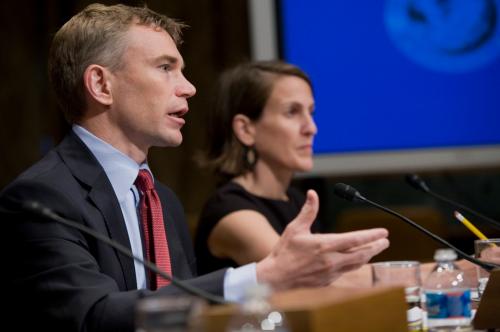With limited government budgets, developing countries need to decide how to allocate funds between, among other things, government investment projects and social safety net programs. While government investment may contribute to growth, the primary purpose of social safety net programs is to improve the conditions of the poor. How should governments trade off these two objectives?
In a recent paper, I illustrate how social welfare analysis can guide policy. Social welfare analysis is an accounting framework that incorporates both a desire for growth and a desire for equality. Intuitively, inequality is undesirable because basic consumption such as food or shelter is more important than luxury goods. Even at the cost of lower average income, it sometimes makes sense to take steps to guarantee that basic needs are satisfied for a larger majority of the population.
The extent to which society should be willing to sacrifice income in order to reduce inequality relates to its risk preferences. Both have to do with comparing the welfare from an additional gain in income with that from a loss in income. People are willing to pay a certain premium for insurance that guarantees some basic income level. The willingness to pay for such insurance is a good indicator of how costly poverty is, and how much society should be willing to sacrifice in order to avoid it. Therefore, measured levels of risk aversion can inform the tradeoff between government investment projects and social safety nets.
The analysis proceeds with two related exercises. First, I ask whether it makes sense to increase taxes in order to finance additional cash transfers. Redistribution is costly both because taxation reduces the incentives to work and because transfers have administrative costs. Quantitatively, this exercise suggests that even under highly conservative assumptions regarding the levels of risk aversion, the vast majority of countries would benefit from additional redistribution financed by taxes.
The second exercise assumes that taxes are fixed, asking instead when governments should divert funds from investment projects toward redistribution. Here, the results depend on the social rates of return to government investment. For every country, I calculated what rate of return to government investment would make a government indifferent between a marginal increase in government investment and additional redistribution. These rates of return are sensitive to parameter values, and vary somewhat by country. Under the most conservative parameterization, in the average country, any government investment project with a positive social rate of return should be financed before additional spending on redistribution. However, other plausible parametrizations imply that unless the rate of return to government investment exceeds 20 percent, most governments should divert funds from public investment projects toward additional redistribution.
This analysis suggests that in most countries, despite the distortionary costs of taxation and the administrative costs of transfers, it is desirable to increase taxes in order to finance additional redistribution. If it is impossible to increase taxes further, it may be desirable to divert funds from government investment projects toward government transfer programs. However, this depends on the rate of return to government investment, which is notoriously hard to measure and may vary wildly by project. For example, Edward Gramlich, a former Federal Reserve governor, suggested that rates of return on infrastructure investment in the U.S. might be as high as 35 percent for some projects and negative for others.
The Brookings Institution is committed to quality, independence, and impact.
We are supported by a diverse array of funders. In line with our values and policies, each Brookings publication represents the sole views of its author(s).







Commentary
Is there enough redistribution?
May 9, 2017